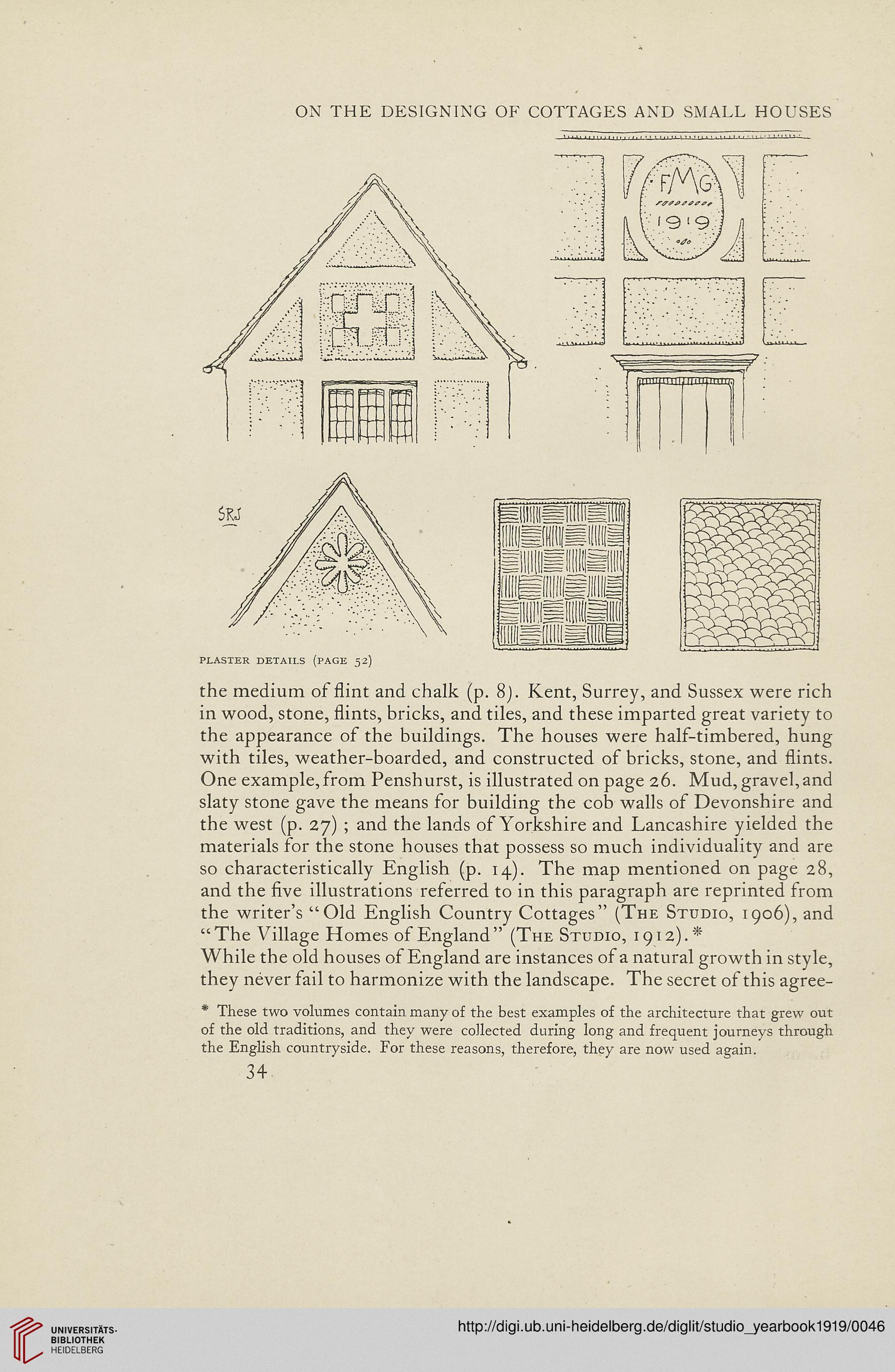ON THE DESIGNING OF COTTAGES AND SMALL HOUSES
PLASTER DETAILS (PAGE 52)
the medium of flint and chalk (p. 8). Kent, Surrey, and Sussex were rich
in wood, stone, flints, bricks, and tiles, and these imparted great variety to
the appearance of the buildings. The houses were half-timbered, hung
with tiles, weather-boarded, and constructed of bricks, stone, and flints.
One example, from Penshurst, is illustrated on page 26. Mud, gravel, and
slaty stone gave the means for building the cob walls of Devonshire and
the west (p. 27) ; and the lands of Yorkshire and Lancashire yielded the
materials for the stone houses that possess so much individuality and are
so characteristically English (p. 14). The map mentioned on page 28,
and the five illustrations referred to in this paragraph are reprinted from
the writer’s “Old English Country Cottages” (The Studio, 1906), and
“The Village Homes of England” (The Studio, 1912).*
While the old houses of England are instances of a natural growth in style,
they never fail to harmonize with the landscape. The secret of this agree-
* These two volumes contain many of the best examples of the architecture that grew out
of the old traditions, and they were collected during long and frequent journeys through
the English countryside. For these reasons, therefore, they are now used again.
34
PLASTER DETAILS (PAGE 52)
the medium of flint and chalk (p. 8). Kent, Surrey, and Sussex were rich
in wood, stone, flints, bricks, and tiles, and these imparted great variety to
the appearance of the buildings. The houses were half-timbered, hung
with tiles, weather-boarded, and constructed of bricks, stone, and flints.
One example, from Penshurst, is illustrated on page 26. Mud, gravel, and
slaty stone gave the means for building the cob walls of Devonshire and
the west (p. 27) ; and the lands of Yorkshire and Lancashire yielded the
materials for the stone houses that possess so much individuality and are
so characteristically English (p. 14). The map mentioned on page 28,
and the five illustrations referred to in this paragraph are reprinted from
the writer’s “Old English Country Cottages” (The Studio, 1906), and
“The Village Homes of England” (The Studio, 1912).*
While the old houses of England are instances of a natural growth in style,
they never fail to harmonize with the landscape. The secret of this agree-
* These two volumes contain many of the best examples of the architecture that grew out
of the old traditions, and they were collected during long and frequent journeys through
the English countryside. For these reasons, therefore, they are now used again.
34




